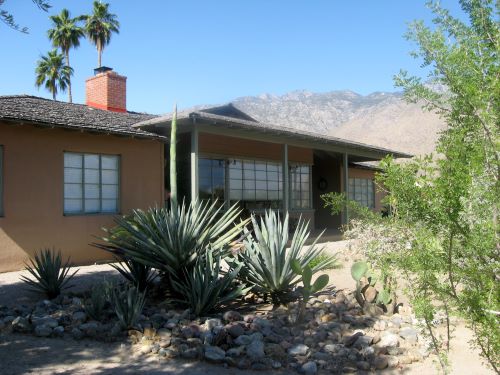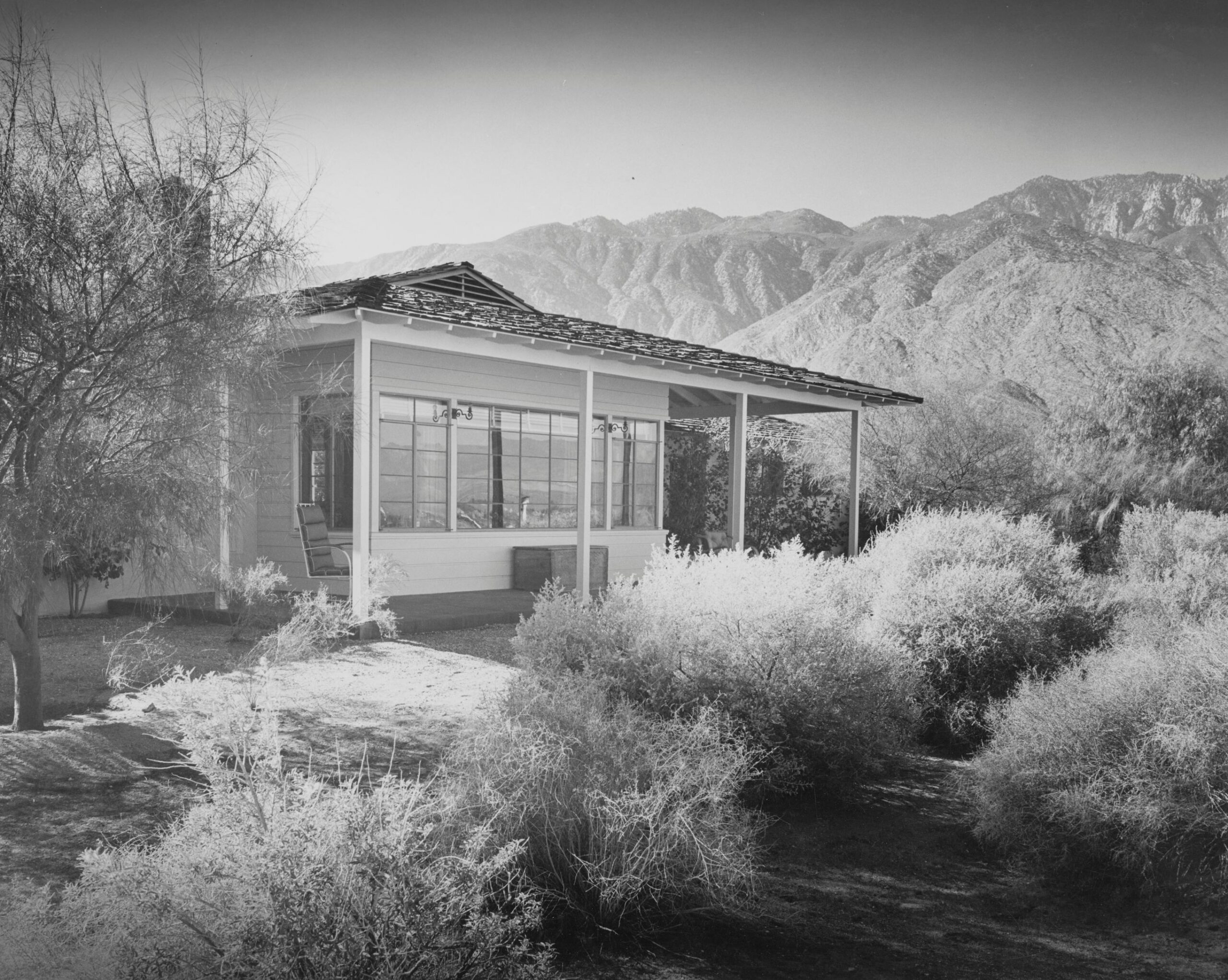J. Cheney Wells Residence 1850 Smoke Tree Lane, Palm Springs, CA 92264
The J. Cheney Wells Residence was designed by Albert Frey and built by well-known desert contractors Wilson & Sorum. Completed in 1942, the residence is an important example of a custom traditional ranch structure as interpreted by a modernist master (traditional “ranch” style architecture was a pre-existing design condition imposed by the covenants of Smoke Tree Ranch). J. Cheney Wells and brothers Channing and Albert were the heads of the American Optical Company, the largest optical manufacturing enterprise of its kind in the world. Cheney and Albert were also the founders and developers of Old Sturbridge Village in Massachusetts, the biggest living history museum in New England.
REFERENCES
On January 30, 2020 the Palm Springs city council voted unanimously (5-0) to approve the Class 1 Historic Resource designation of the J. Cheney Wells Residence. Steve Vaught (PSPF member and author of the nomination) spoke on behalf of the nomination.
On November 12, 2019 the city’s Historic Site Preservation Board voted unanimously (7-0) to recommend to city council approval of the Class 1 Historic Resource designation of the J. Cheney Wells Residence. Tracy Conrad, CEO of Smoke Tree Ranch, spoke on behalf of the owners. PSPF member and nomination author Steve Vaught made public comment in support of the nomination.
On September 19, 2019 the Palm Springs Preservation Foundation (acting as agent for the owner) submitted the 75-page Class 1 Historic Resource nomination for the J. Cheney Wells Residence to the Palm Springs Historic Site Preservation Board.
In January of 2019, the Palm Springs Preservation Foundation board of directors assigned the task of writing the Class 1 Historic Resource nomination of the J. Cheney Wells Residence to Steve Vaught.

